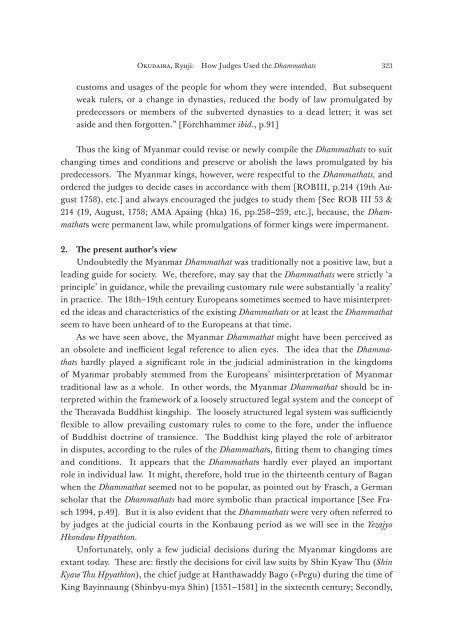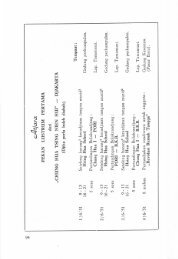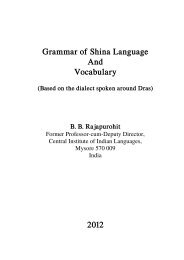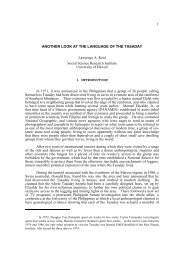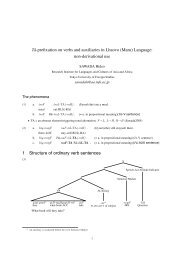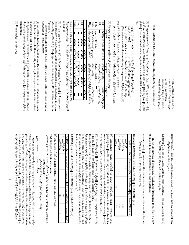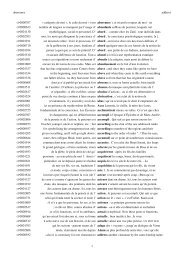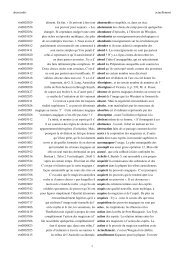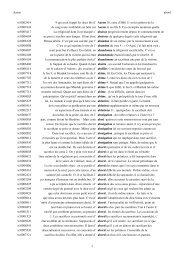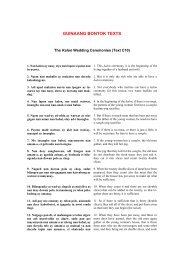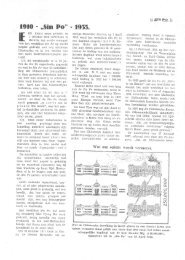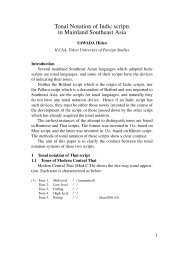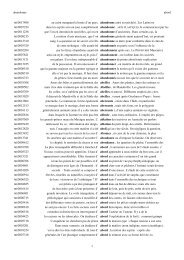ç® æ¬¡ - æ±äº¬å¤å½èªå¤§å¦ã¢ã¸ã¢ã»ã¢ããªã«è¨èªæåç 究æ
ç® æ¬¡ - æ±äº¬å¤å½èªå¤§å¦ã¢ã¸ã¢ã»ã¢ããªã«è¨èªæåç 究æ
ç® æ¬¡ - æ±äº¬å¤å½èªå¤§å¦ã¢ã¸ã¢ã»ã¢ããªã«è¨èªæåç 究æ
You also want an ePaper? Increase the reach of your titles
YUMPU automatically turns print PDFs into web optimized ePapers that Google loves.
O, Ryuji: How Judges Used the Dhammathats<br />
<br />
customs and usages of the people for whom they were intended. But subsequent<br />
weak rulers, or a change in dynasties, reduced the body of law promulgated by<br />
predecessors or members of the subverted dynasties to a dead letter; it was set<br />
aside and then forgotten.” [Forchhammer ibid., p.]<br />
us the king of Myanmar could revise or newly compile the Dhammathats to suit<br />
changing times and conditions and preserve or abolish the laws promulgated by his<br />
predecessors. e Myanmar kings, however, were respectful to the Dhammathats, and<br />
ordered the judges to decide cases in accordance with them [ROBIII, p. (th August<br />
), etc.] and always encouraged the judges to study them [See ROB III &<br />
(, August, ; AMA Apaing (hka) , pp.–, etc.], because, the Dhammathats<br />
were permanent law, while promulgations of former kings were impermanent.<br />
. e present author’s view<br />
Undoubtedly the Myanmar Dhammathat was traditionally not a positive law, but a<br />
leading guide for society. We, therefore, may say that the Dhammathats were strictly ‘a<br />
principle’ in guidance, while the prevailing customary rule were substantially ‘a reality’<br />
in practice. e th–th century Europeans sometimes seemed to have misinterpreted<br />
the ideas and characteristics of the existing Dhammathats or at least the Dhammathat<br />
seem to have been unheard of to the Europeans at that time.<br />
As we have seen above, the Myanmar Dhammathat might have been perceived as<br />
an obsolete and inefficient legal reference to alien eyes. e idea that the Dhammathats<br />
hardly played a significant role in the judicial administration in the kingdoms<br />
of Myanmar probably stemmed from the Europeans’ misinterpretation of Myanmar<br />
traditional law as a whole. In other words, the Myanmar Dhammathat should be interpreted<br />
within the framework of a loosely structured legal system and the concept of<br />
the eravada Buddhist kingship. e loosely structured legal system was sufficiently<br />
flexible to allow prevailing customary rules to come to the fore, under the influence<br />
of Buddhist doctrine of transience. e Buddhist king played the role of arbitrator<br />
in disputes, according to the rules of the Dhammathats, fitting them to changing times<br />
and conditions. It appears that the Dhammathats hardly ever played an important<br />
role in individual law. It might, therefore, hold true in the thirteenth century of Bagan<br />
when the Dhammathat seemed not to be popular, as pointed out by Frasch, a German<br />
scholar that the Dhammathats had more symbolic than practical importance [See Frasch<br />
, p.]. But it is also evident that the Dhammathats were very oen referred to<br />
by judges at the judicial courts in the Konbaung period as we will see in the Yezajyo<br />
Hkondaw Hpyathton.<br />
Unfortunately, only a few judicial decisions during the Myanmar kingdoms are<br />
extant today. ese are: firstly the decisions for civil law suits by Shin Kyaw u (Shin<br />
Kyaw u Hpyathton), the chief judge at Hanthawaddy Bago (=Pegu) during the time of<br />
King Bayinnaung (Shinbyu-mya Shin) [–] in the sixteenth century; Secondly,


